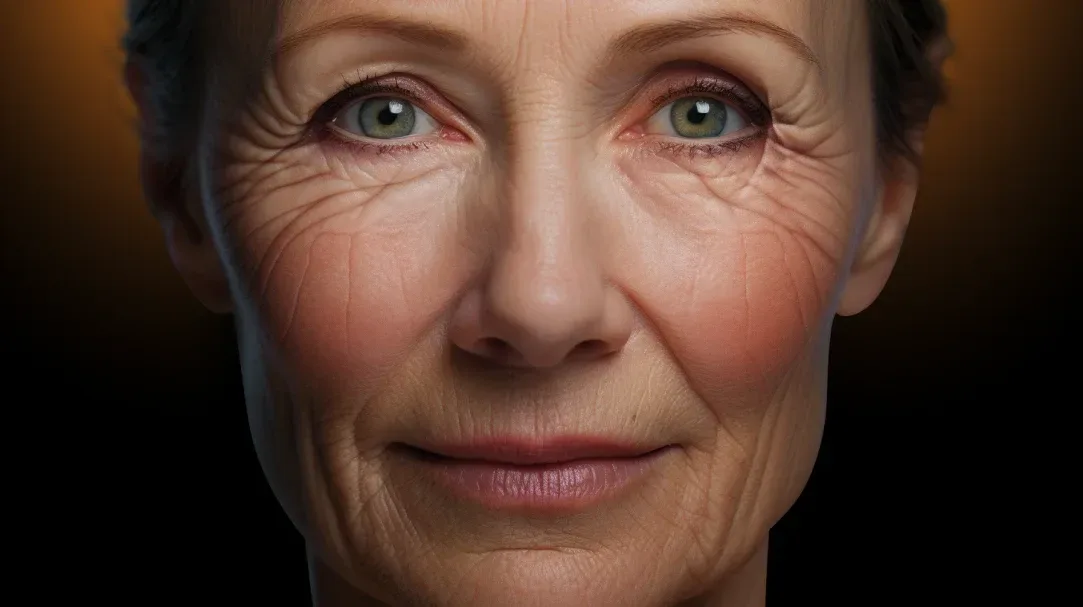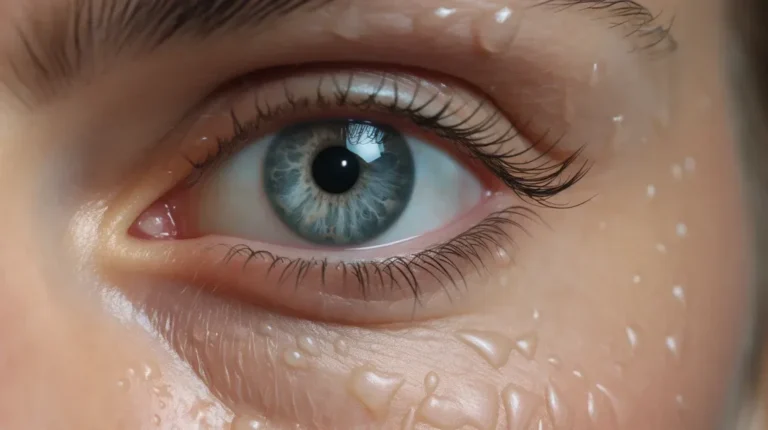Botox Vs Botulism: Understanding the Difference
Understanding the distinction of botox vs botulism is crucial, especially in medical aesthetics. Botox, a purified form of the botulinum toxin, is safely used in small, controlled doses for cosmetic and therapeutic purposes, such as reducing wrinkles and treating certain medical conditions.
On the other hand, botulism is a severe illness caused by botulinum toxin exposure, usually through contaminated food, and characterized by muscle paralysis. This guide will clarify the differences between the two, emphasizing the safe application of Botox in clinical settings compared to the health risks associated with botulism.
So, let’s get started on this journey of discovery!
Key Takeaways Of “Botox vs Botulism”
- Advances in medical aesthetics have expanded the applications of Botox beyond cosmetic procedures, making it relevant in therapeutic contexts as well.
- The growing consumer awareness about the risks of botulism, particularly in relation to food safety and public health, has become a significant concern.
- The discourse of modern medical aesthetics emphasizes the importance of balancing cosmetic benefits with health risks, considering patient safety, ethical implications, and long-term effects.
- The evolving landscape of aesthetic medicine highlights the importance of FDA approval, clinical safety, and industry best practices in cosmetic procedures.
Chemical Structure and Mechanism
Diving into the chemical nuances of Botox and botulinum toxin reveals the intricate balance between therapeutic benefits and potential risks:
- Chemical Structure of Botulinum Toxin:
Originates from Clostridium botulinum bacteria.
It’s a complex protein neurotoxin.
- Mechanism of Action:
Botox works by inhibiting the release of acetylcholine, a key neurotransmitter in muscle contraction.
This blockade leads to temporary muscle paralysis, reducing wrinkles or treating certain muscular conditions.
- Botulism vs. Therapeutic Use:
In botulism, uncontrolled amounts of the toxin cause widespread muscle paralysis, posing severe health risks.
In contrast, Botox uses highly purified, minute doses of the toxin for targeted muscle relaxation.
- Clinical Applications and Safety:
Botox is effective for various medical conditions and cosmetic purposes.
Despite its therapeutic benefits, understanding its mechanism and adhering to safety protocols is essential to minimize potential side effects.
Botulinum toxin injections, derived from the bacterium Clostridium botulinum, are widely used in cosmetic procedures for treating facial wrinkles, glabellar lines, and frown lines. This toxin, particularly Botulinum Toxin Type A, has also found applications in medical treatments, such as managing conditions like overactive bladder. While its cosmetic benefits are well-known, the toxin’s origin from Clostridium botulinum also links it to concerns about foodborne botulism in different contexts.
FDA Approval and Off-Label Uses

Botox, a botulinum toxin product, has specific FDA-approved uses and various off-label applications. Understanding this regulatory landscape is vital for informed decision-making:
- FDA Approval:
Botox has received FDA approval for certain medical conditions, including chronic migraines, specific muscle spasm disorders, and cosmetic purposes like wrinkle reduction.
The FDA’s approval is based on rigorous clinical trials demonstrating safety and efficacy for these specific uses.
- Off-Label Uses:
Botox is often used off-label for conditions like excessive sweating (hyperhidrosis), jawline contouring, and even some types of bladder disorders.
While familiar, these uses aren’t explicitly covered under FDA approval, implying that they have yet to undergo the same level of scrutiny for these specific conditions.
- Importance of Professional Consultation:
Consulting with healthcare professionals experienced in Botox treatments is crucial, especially for off-label uses.
They can provide insights into the benefits, risks, and appropriateness of Botox for individual needs.
Awareness of FDA-approved uses and a cautious approach to off-label applications can guide individuals in making safe choices regarding Botox treatments.
Safety Protocols and Side Effects
Discuss the safety protocols and potential side effects associated with Botox injections.
- Safety Protocols:
Botox treatments should only be performed by trained healthcare providers specializing in medical aesthetics.
Prior to the procedure, patients should disclose their medical history and any medications they’re taking to ensure safety.
Treatment protocols involve identifying the precise injection sites and using the proper dosage to minimize risks.
Follow-up appointments are necessary to monitor the patient’s progress and address concerns.
- Potential Side Effects:
Common side effects include temporary bruising, swelling, and redness at the injection site.
In rare cases, patients may experience muscle weakness, drooping eyelids, or difficulty swallowing or breathing.
Adverse reactions can be minimized by choosing a reputable provider and following proper injection techniques.
Patient satisfaction with Botox treatments remains high, and serious complications are infrequent when performed correctly by trained professionals.
Botulism: Causes, Symptoms, and Prevention
Botulism, though rare, is a severe condition that requires awareness and prevention measures. Understanding its causes, symptoms, and ways to prevent it is crucial for health and safety:
Causes of Botulism:
- Caused by Clostridium botulinum bacteria.
- Commonly linked to improperly processed or stored foods, mainly canned or preserved items.
- It can also occur through wound infections.
Symptoms to Watch For:
- Early signs include muscle weakness, difficulty swallowing, drooping eyelids, double vision, and slurred speech.
- As it progresses, it can lead to difficulty breathing and paralysis.
Prevention Strategies:
- Practice safe food handling: Properly process and store food, especially canned goods.
- Be cautious of food appearance and integrity: Avoid consuming bulging or leaking canned items.
- Ensure proper cooking temperatures to neutralize potential toxins.
Immediate Action and Treatment:
- If botulism is suspected, seek immediate medical attention.
- Treatment typically involves antitoxins and supportive care in a hospital setting.
Public health awareness and individual caution are vital in preventing botulism. Recognizing symptoms and understanding prevention methods can significantly reduce the risk of this potentially life-threatening condition.
Ethical Considerations in Cosmetic Use
To fully understand the nuances of Botox and its relationship to botulism, it’s essential to consider the ethical implications of its cosmetic use. Here are some key points to consider:
- Cosmetic industry trends: Botox and other injectable fillers have become increasingly popular in aesthetic medicine, with more people seeking non-surgical solutions for facial rejuvenation.
- Aesthetic medicine professionals: Dermatologists and plastic surgeons are the primary healthcare providers administering Botox treatments, ensuring safety and adherence to medical ethics.
- Beauty standards and health and wellness: The desire to meet societal beauty standards and maintain a youthful appearance often motivates individuals to seek Botox treatments, linking cosmetic enhancements with the broader concept of health and wellness.
- Medical research: Ongoing studies and clinical trials continue to explore the efficacy and safety of Botox, informing medical professionals and patients about the potential benefits and risks of these treatments.
Understanding the ethical considerations surrounding the cosmetic use of Botox is vital in ensuring patient safety, informed decision-making, and responsible practices within the industry.
Frequently Asked Questions
Can You Explain the Differences Between the Chemical Structure and Action Mechanism of Botox and Botulinum Toxin?
Botox and botulinum toxin have different chemical structures but similar action mechanisms. Botox is a purified form of botulinum toxin used in cosmetics and treatments to relax muscles and reduce wrinkles.
What Are Some Off-Label Uses of Botox That Are Not Fda-Approved?
Off-label uses of Botox, not FDA-approved, include migraine treatment, excessive sweating, and muscle spasms. While these uses may show promising results, consulting a healthcare professional for guidance and safety is essential.
What Safety Protocols Should Be Followed During Botox Injections, and What Are the Potential Side Effects?
When getting Botox injections, following safety protocols like finding a qualified provider is essential. Potential side effects may include temporary bruising or headache. Discuss concerns with your healthcare professional.
What Are the Causes and Symptoms of Botulism, and What Strategies Can Be Used for Prevention?
To prevent botulism:
- Be aware of its causes and symptoms.
- Avoid consuming improperly canned or preserved foods.
- If you suspect botulism poisoning, seek medical help immediately to prevent further complications.
What Are the Ethical Considerations Surrounding the Promotion and Use of Botox for Cosmetic Purposes?
Considering the ethical considerations surrounding the promotion and use of Botox for cosmetic purposes is essential. Understanding the potential impacts on patient autonomy, body image, and societal beauty standards is essential.
Conclusion
In conclusion, understanding the difference between Botox and botulism is crucial in cosmetic treatments and public health.
While Botox is a safe and FDA-approved treatment for various cosmetic and therapeutic purposes, botulism is a severe illness caused by the same toxin.
By being aware of the chemical structure, mechanism, and potential side effects of Botox, as well as the causes, symptoms, and prevention strategies for botulism, individuals can make informed decisions about their health and well-being.
Remember, ‘knowledge is power’ when navigating the world of cosmetic enhancements and ensuring public safety.







